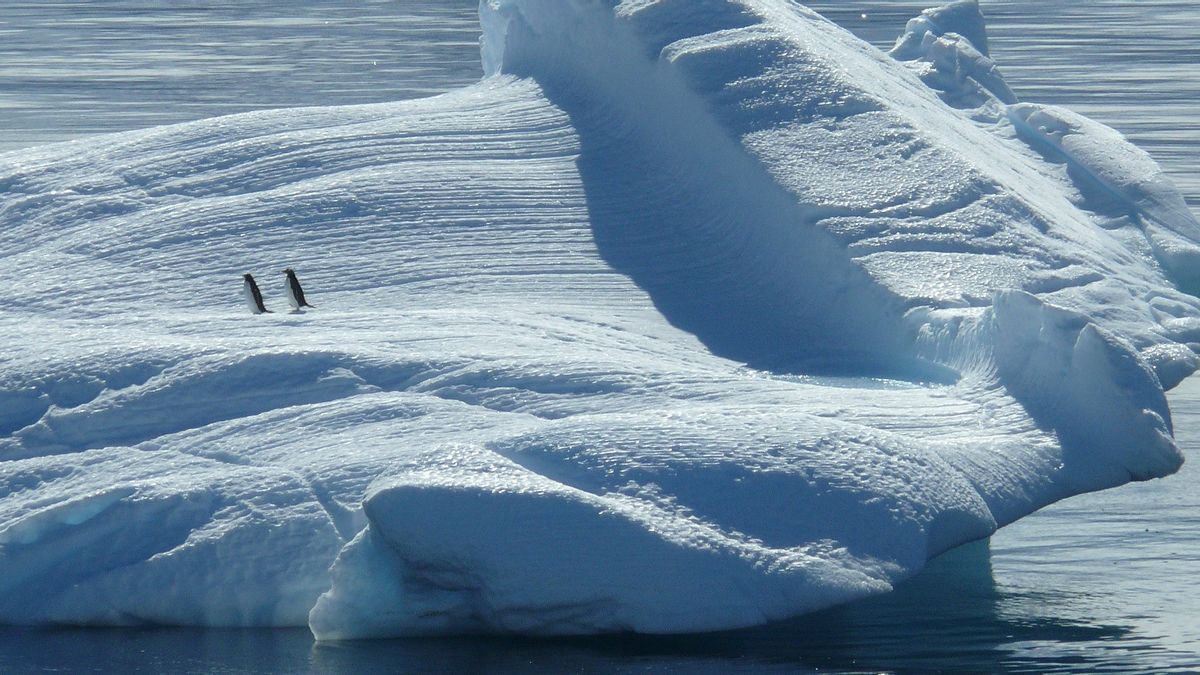JAKARTA - More than a century ago or in 1909, American explorer Robert Peary managed to reach the northernmost side of the Earth. This exploration mission is something that has never been imagined by humans before.
Together with his assistant, Matthew Henson and four Eskimos, Robert Peary reached the farthest point of the Earth's geography or to the point where a compass needle is always pointing. Then what's there?
Geographically, the North Pole is the northernmost point on the planet, where the Earth's axis is tangent to its surface. The latitude is 90 degrees north. There, there is no time zone.
As quoted by Live Science, the pole is surrounded by the Arctic Ocean, which reaches a depth of 13,400 feet or 4,084 meters. The top layer is covered with ice 1.8 to 3 meters thick.
Because it is the axis of the Earth's tilt, the North Pole only experiences one sunrise and one sunset per year. Each occurred in March and September. So during summer, there is always sun all day long, while during winter, it's always dark there.
The temperature in the Arctic is clearly very cold. In summer alone the temperature can reach 0 Celsius. Meanwhile, the North Pole's annual average temperature is minus 40 Celsius. And the person who was predicted for the first time touched and breathed the cold air in the North Pole, namely Robert Peary.

As cited history, Peary is a US Navy civil engineering engineer. He made his first exploration of the interior of Greenland in 1886. In 1891, Henson, a young African-American sailor, joined as his assistant on his second Arctic expedition.
They took the long dog train journey to northeastern Greenland and explored what is now known as "Peary Land." In 1893, explorers began moving toward the North Pole, and in 1906, on their second voyage, they had almost reached latitude 88 degrees north.
Then in 1908 the couple traveled to Ellesmere Island by boat and a year later managed to cross hundreds of miles of ice to reach a point at latitude 90 degrees north on this day more than a century ago or 1909.
What's at the North Pole?
Still according to Live Science, the inhabitants of the ice poles are dominated by birds that want to migrate from one region to another. For example the little snow bird, fulmar, kittiwake.
Meanwhile, land animals that have been seen in the Arctic region (although rare) are polar bears. In addition, the caribou or wildebeest and weasel do not dare to venture to the point of the North Pole, even though they live in the surrounding area.
Meanwhile, if you look under the ice, you can find crustaceans or small crustaceans, sea anemones, and several species of fish, the most common of which is arctic cod. Meanwhile, outdoor mammals such as whales rarely venture to the North Pole.
The English, Chinese, Japanese, Arabic, and French versions are automatically generated by the AI. So there may still be inaccuracies in translating, please always see Indonesian as our main language. (system supported by DigitalSiber.id)









